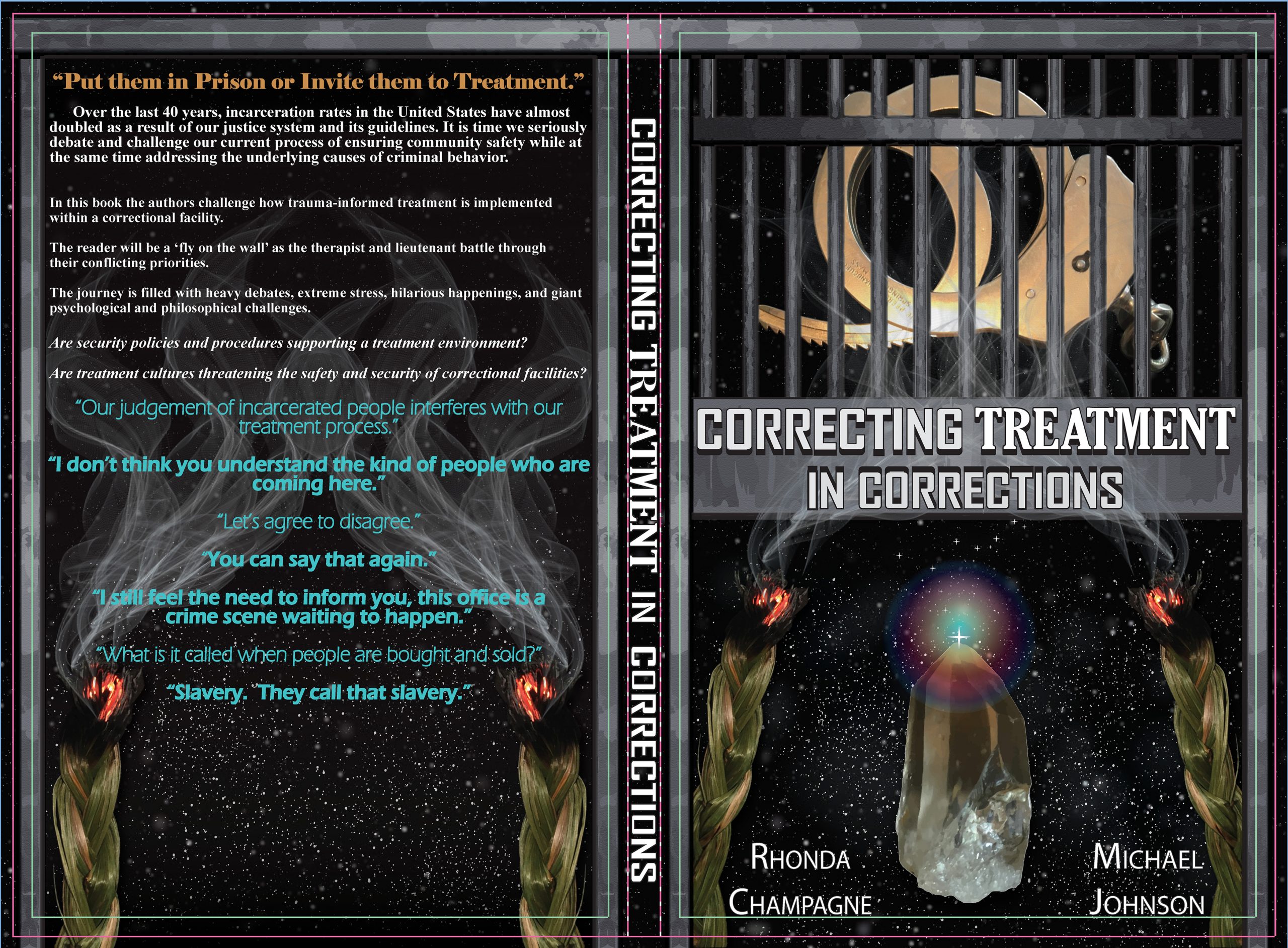Correcting Treatment in Corrections
“The United States is the world’s leader in incarceration with 2.2 million people currently in the nation’s prisons and jails, a 500 percent increase over the last forty years. Changes in sentencing law and policy, not changes in crime rates, explain most of this increase. These trends have resulted in prison overcrowding and fiscal burdens on states to accommodate a rapidly expanding penal system, despite increasing evidence that large scale incarceration is not an effective means of achieving public safety.”
Over the last 40 years, incarceration rates in the United States have almost doubled as a result of our justice system and its guidelines. Research-based studies show a large population of incarcerated people have underlining trauma related to addiction and criminal behavior. It is time to seriously debate and challenge our current process of ensuring community safety while at the same time addressing the underlying causes of addictions and criminal behavior.
In the book “Correcting Treatment in Corrections”, the authors share their experience in implementing a trauma-informed treatment program within a correctional facility. The journey is filled with heavy debates, extreme stress, hilarious happenings, and giant psychological and philosophical challenges. Rhonda Champagne, a licensed clinical social worker (LCSW) was hired to be the trauma therapist at the Riverside Correctional Facility. She would assist the development of a trauma treatment culture and help lead the team in implementing a trauma-informed and trauma-responsive treatment program. A simple task with her credentials and extensive experience.
There was only one thing standing in the way. The policies and procedures developed to uphold a safe and secure environment in a correctional setting. It did not take long before the therapist was able to put a face to these policies and procedures. Lieutenant Michael Johnson became that ‘face’ as the housing unit manager.
In the book they share the rollercoaster ride of emotions and challenges they faced. Throughout the process they struggled with the cloak of policy and procedure often created for a maximum level security setting. The reader will follow Trauma Therapist, Rhonda Champagne, as she enters the shocking world of corrections from a treatment perspective. The reader will also follow the Housing Manager, Lieutenant Michael Johnson’s perspective, in upholding safety and security measures while moving into the unfamiliar world of treatment. They quickly found the two worlds to be counteractive and counterproductive in many ways. The reader will experience how they managed to uphold safety and security measures while supporting a treatment culture. The program and treatment philosophies implemented stretched the bounds of conventional treatment, especially in a correctional environment.
The reader will be a ‘fly on the wall’ as the trauma therapist and department of corrections lieutenant battle through their conflicting priorities. They will follow the many debates between the elements of treatment and security. This eavesdropping dialog provides the reader the opportunity to come to their own conclusion as to how to best implement a trauma treatment program inside a correctional environment.
This style of writing is exceptionally useful to the undergraduate’s ability to apply deep introspection in their upcoming career in any field dealing with human behavior but particularly in peer support, criminology and social work.
IN THE NEWS
Book by former correction employees critiques Montana’s offender-treatment programs
New book, state audit scrutinize contracted correctional programs in MT
https://podcasts.apple.com/us/podcast/talk-back/id1511606812?i=1000521738660&at=1l3vwYf
“You write in order to change the world, knowing perfectly well that you
probably can’t,
but also knowing that literature is indispensable to the world…
The world changes according to the way people see it, and if you alter,even by a millimeter, the way… people look at reality,
then you can change it.”
James Baldwin

What’s inside
Preface
It is time we seriously debate and challenge our current process of ensuring community safety, while at the same time, addressing the underlining causes of criminal behavior. It’s time to seriously question the effects of power and control over incarcerated people versus understanding and treating human behavior. Is power and control making our communities safer, or would understanding and treating human behavior better support public safety?
Over the last 40 years, incarceration rates in the United States have almost doubled as a result of our justice system and its guidelines. Statistics suggest that this approach to the problem has only increased incarceration levels.
Montana’s top ten criminal offenses for both male and female offenders make up the majority of the prison inmate population.
Montana Top 10 Criminal Offenses for Male and Female Offenders
Males
- Criminal Possession of Dangerous Drugs
- Criminal Endangerment
- Theft
- Felony DUI
- Burglary
- Assault with a Weapon
- Partner Family Member Assault
- Criminal Possession with Intent to Distribute
- Criminal Distribution of Drugs
- Failure to Register
Females
- Criminal Possession of Dangerous Drugs
- Criminal Endangerment
- Theft
- Felony DUI
- Criminal Distribution of Drugs
- Criminal Child Endangerment
- Forgery
- Criminal Possession with Intent to Distribute
- Burglary
- Bail Jumping
What we don’t see on the top ten list of crimes is murder and sex crimes, such as child molestation. Most of the top ten crimes are related to addiction. Studies suggest many addictions are related to underlining trauma. Addiction and trauma can be treated.
The correctional systems across the United States of America have a goal to reduce recidivism through treatment. In this book, the authors challenge how treatment is being implemented within the correctional system. Are security policies and procedures supporting a treatment environment? This is a difficult ethical topic to debate. Arguments can be, and have been, made to uphold opposing positions. This book is intended to further discussion and debate on how to best ensure public safety, reduce overcrowding prisons, reduce costs, reduce recidivism, support victims, and at the same time, provide successful trauma and addiction treatment for offenders.
The authors share their rollercoaster ride of emotions and the challenges they faced while creating and implementing a trauma treatment program within a correctional facility. Throughout the process, they struggled with the mandated policies and procedures that often seemed more appropriate for a maximum-level security setting. The reader will follow Rhonda Champagne, a trauma therapist, as she enters the shocking world of corrections, from a treatment perspective. The reader will also follow Lieutenant Michael Johnson’s challenges to uphold safety and security measures while moving into the unfamiliar world of treatment. They quickly found the two worlds to be counteractive and counterproductive in many ways. The program and treatment philosophies that were implemented over months stretched the bounds of both conventional treatment and a conventional correctional environment.
Their journey was filled with extreme stress, hilarious episodes, unique characters, and a great deal of psychological and philosophical challenges. During this journey, they both experienced laughter, happiness, sadness, anger, frustration, tears, gratitude, resentment, and every other emotion known to humans. It was a unique experience with special people involved in its functioning. From the corrections staff who worked there, to the women who arrived for treatment, all experienced a level of connectedness not typically found in a correctional setting. Truly, a level of magic took hold of this group of people, the processes and the program’s purpose.
This is the story of the Riverside Recovery and Reentry Program, a trauma rehabilitation pilot program for incarcerated women from prisons or jails across Montana. The program was developed in the Fall of 2015, in a secured prison facility, previously used to house juvenile girls. The facility sat on approximately five acres of fenced-in land located just outside the small town of Boulder, Montana. The chain link fence stood approximately twenty feet high and included three rows of barb wire across the top. Within the fence line were five separate brick buildings. The housing unit was divided into east and west units. Each had its own dayroom, eating area, and hall of bedrooms. There were 14 bedrooms in total, and 32 beds. Some bedrooms had only one bed, some had two beds and others contained three beds. Kitchen and laundry areas were shared by both units. Two security offices provided a full spectrum observation of the dayrooms.
As a result of an increase in community based programs for juveniles, the Riverside facility became available for a Montana Department of Corrections (DOC) pilot program that was to be designed to treat the underlying trauma that so many incarcerated people have experienced. The pilot program had stunning positive results. Despite significant controversy, often uncomfortable dialog, and sometimes wrenching compromises, it became a place of healing and hope. This is a story of two seemingly opposing worlds ultimately coming together to create a successful trauma-informed treatment environment for offenders, without compromising safety and security requirements.
We invite you, the reader, to arrive at your own conclusion as how to best implement treatment in a secure setting without further traumatizing the people being treated.
Chapters
Pages
Speaking Engagements!
Schedule Michael and Rhonda to come speak at your next event.
Advocate For Legislative Action
Enter your email below and join us in advocating for a change in treatment offered within the correctional system.
- Stop using treatment centers as forms of punishment.
- To cease all 20-year contracts between the Department of Corrections (DOC) and private organizations.
- To mandate trauma informed treatment in Montana’s DOC owned and/or privately contracted treatment facilities using the evidence-based guidelines provided by Substance Abuse Mental Health Services Administration (SAMHSA).
- Mandating 'independent standardized measuring tool' to assess recidivism rates.
- To mandate the use of SAMHSA’s six key principle guidelines to measure the effectiveness of Montana’s DOC owned and/or contracted treatment centers with private organizations.
- To mandate the development of specialized Correctional Counselor, trauma informed trainings. Training which will teach Correctional Counselors to uphold a safe and secure environment through a relationship-based rapport with incarcerated people in Montana’s DOC owned and/or privately contracted treatment facilities.

